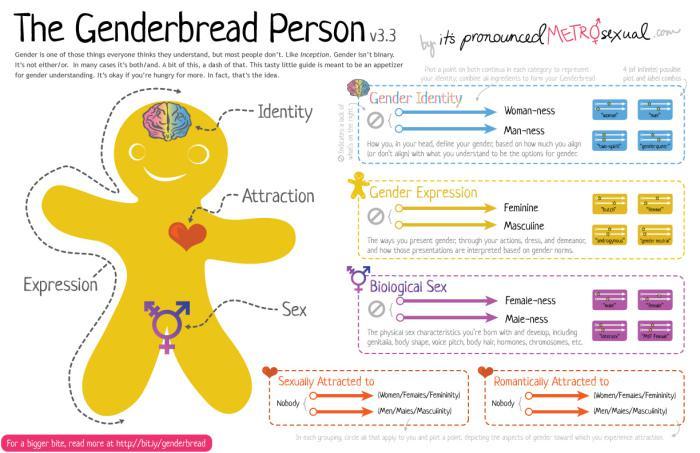New research is challenging the long-held assumption that a child’s biological sex is determined by a simple 50-50 chance at conception. Emerging scientific studies suggest that various biological and environmental factors may subtly influence the likelihood of having a boy or a girl, disrupting the notion of pure randomness in sex determination. This nuanced understanding could have important implications for medicine, genetics, and the study of human reproduction.
Factors Influencing the Probability of a Child’s Biological Sex Unveiled by New Research
Recent studies have challenged the long-held assumption that the likelihood of a child being born male or female is an equal 50-50 split. Researchers have identified multiple biological, environmental, and even socio-economic factors that subtly skew this balance. For example, parental hormone levels around the time of conception can influence the odds, with elevated testosterone in mothers linked to a higher probability of male offspring. In addition, environmental elements such as temperature, stress levels, and exposure to certain chemicals have also been observed to affect the sex ratio.
Key factors identified include:
- Parental Age: Older parents tend to have a slightly different sex ratio outcome compared to younger ones.
- Environmental Stressors: Natural disasters or socio-political upheavals correlate with shifts in birth sex ratios.
- Nutrition and Health: Maternal diet and overall health at conception time play a role in sex determination.
| Factor | Effect on Sex Ratio | Scientific Evidence |
|---|---|---|
| Maternal Testosterone Levels | Increased chance of male child | Moderate |
| Parental Age | Variable shift toward female offspring | Emerging |
| Environmental Stress | Temporary skew, often towards females | Strong |
| Nutrition Status | Higher male births with better nutrition | Moderate |
Scientists Explore Genetic and Environmental Contributors to Sex Determination Variability
Recent studies challenge the conventional understanding that biological sex at birth follows a straightforward 50-50 distribution influenced solely by parental chromosomes. Scientists are uncovering a complex interplay between genetics and environmental factors that can tilt this balance, revealing that sex determination is influenced by subtle variations beyond just the presence of X and Y chromosomes. Genetic mutations, epigenetic modifications, and the timing of gene expression during embryonic development are among the key contributors altering the usual patterns.
Additionally, environmental components such as maternal health, exposure to endocrine-disrupting chemicals, and even temperature fluctuations have shown measurable effects on sex ratios in various species, prompting researchers to investigate similar mechanisms in humans. These factors can affect hormonal balances that play a crucial role in early gonadal differentiation. Among the emerging evidence:
- Epigenetic changes impacting the expression of sex-determining genes
- Variations in maternal hormone levels during critical developmental windows
- Environmental toxins linked to skewed sex ratios in epidemiological studies
| Factor | Influence on Sex Determination | Example |
|---|---|---|
| Genetic Mutations | Alter gene function during embryogenesis | SRY gene variants |
| Environmental Exposures | Hormone disruption affecting gonadal development | Phthalates, BPA |
| Maternal Health | Influences hormone milieu in utero | Stress, nutrition |
Experts Recommend Further Studies to Improve Understanding and Inform Reproductive Counseling
Scientists emphasize the necessity of expanding current research to unravel the complexities behind biological sex determination. Emerging evidence suggests that factors beyond simple chromosomal inheritance might influence the eventual sex of a child, challenging the long-held assumption of a straightforward 50-50 probability. Future investigations could explore genetic variants, epigenetic modifications, and environmental influences that subtly bias sex ratios in unpredictable ways.
Key areas identified for deeper analysis include:
- Genomic imprinting effects on sex chromosome expression
- Impact of parental age and health on sex ratio deviations
- Potential role of hormonal fluctuations during conception and early embryogenesis
- Societal and ethical implications for reproductive counseling practices
| Research Focus | Potential Outcome | Implications for Reproductive Counseling |
|---|---|---|
| Genetic Analysis | Understanding sex ratio variability | Personalized guidance on conception risks |
| Environmental Studies | Identification of external sex-determining factors | Recommendations for lifestyle modifications |
| Epigenetics | Insights into gene regulation affecting sex chromosomes | Enhanced prediction models for offspring sex |
Key Takeaways
As emerging research challenges the long-held assumption that a child’s biological sex is determined by an equal 50-50 probability, scientists are uncovering a more complex interplay of genetic, environmental, and possibly evolutionary factors. These findings not only deepen our understanding of human development but also open new avenues for exploring how sex ratios vary across populations and conditions. As the science progresses, it may reshape how we think about biology, inheritance, and even demographic trends worldwide. Stay tuned as further studies continue to illuminate this nuanced aspect of human biology.
